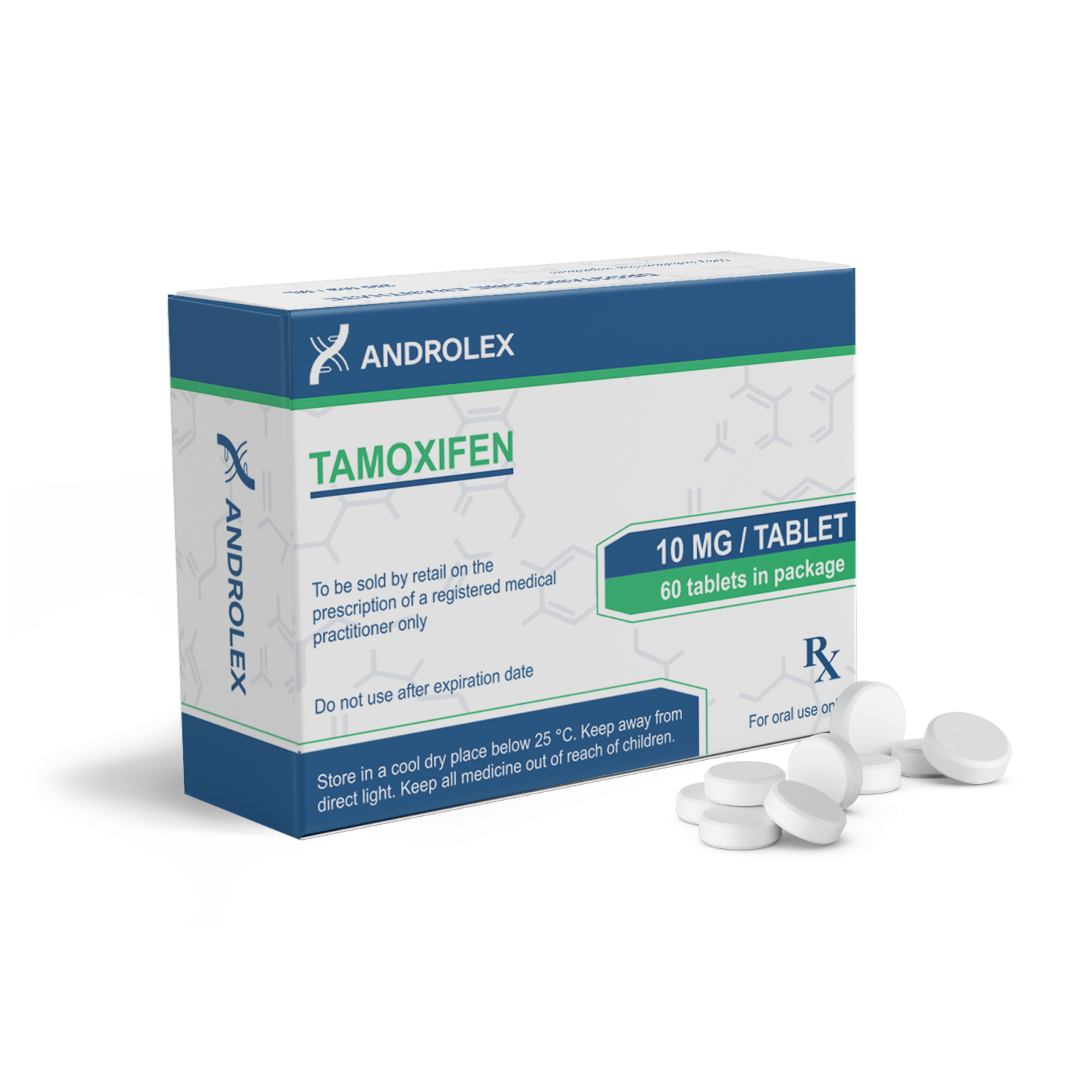



- Stock: In Stock
- Package: 10 MG/TAB
This offer ends in:
What is tamoxifen
Tamoxifen is a selective estrogen receptor modulator (SERM) belonging to the triphenylethylene group. It acts as both an estrogen antagonist and partial agonist, depending on the tissue type. In most tissues — including the breast, hypothalamus, and pituitary gland — it blocks estrogen receptors, while in bone tissue, tamoxifen activates estrogen receptors, helping to preserve bone density and prevent osteoporosis.
Originally developed for breast cancer therapy, tamoxifen is also widely used in post-cycle therapy (PCT) and male hormonal restoration protocols due to its ability to stimulate natural testosterone production. It achieves this by inhibiting estrogenic feedback on the hypothalamus and promoting the release of gonadotropin-releasing hormone (GnRH), which in turn increases LH and FSH secretion from the pituitary gland, triggering testosterone synthesis in the testes.
Main effects of tamoxifen
💪 Stimulates natural testosterone production after suppression
🧬 Blocks estrogen receptors in most tissues
🩸 Prevents or reverses estrogen-induced gynecomastia
⚖️ Helps normalize the hypothalamic–pituitary–gonadal (HPG) axis
🦴 Supports bone mineral density through partial estrogenic activity
🌿 Reduces risk of estrogen rebound after anabolic cycles
How to take tamoxifen
Administration
- Route: Oral, taken with water
- Frequency: Once or twice daily
- Half-life: Approximately 5–7 days
- Food interaction: Minimal; can be taken with or without meals
Dosage
- Typical range: 10–40 mg per day
- Cycle duration: Commonly 2–4 weeks in recovery protocols
- Therapeutic use: Determined by physician depending on indication
⚠️ Tamoxifen should not be combined with progestin-based compounds (e.g., nandrolone, trenbolone), as it increases progesterone receptor density, potentially worsening side effects.
Possible side effects
- Hot flashes or mild sweating
- Nausea, dizziness, or fatigue
- Temporary mood swings or insomnia
- Visual disturbances (rare)
- Possible changes in liver enzyme levels with prolonged use
Contraindications
- Pregnancy or breastfeeding
- Active thromboembolic disorders
- Severe liver disease
- Concomitant progestin therapy
- Hypersensitivity to tamoxifen or related compounds
How to store
- Keep at room temperature (20–25 °C / 68–77 °F)
- Store in a cool, dry place, away from light and moisture
- Keep out of reach of children
How does tamoxifen work
Tamoxifen exerts its primary effect by binding competitively to estrogen receptors (ERs), preventing natural estrogens from activating them. This receptor blockade disrupts the normal estrogen feedback mechanism on the hypothalamus and pituitary gland, leading to an increase in GnRH, and subsequently, elevated LH and FSH secretion. These gonadotropins stimulate testosterone and sperm production in the testes, helping restore endogenous androgen levels after suppression.
In bone and some cardiovascular tissues, tamoxifen shows partial agonist activity, which explains its protective effect against bone loss and favorable lipid modulation.
Unlike clomiphene, tamoxifen acts less selectively, binding to estrogen receptors throughout the body rather evenly, making it particularly effective for treating gynecomastia caused by estrogenic activity. However, its lower selectivity for pituitary receptors means it may be slightly less potent than clomiphene for stimulating gonadotropins directly.
Overall, tamoxifen serves as a versatile SERM that balances antiestrogenic and supportive estrogenic effects, making it a cornerstone compound for post-cycle recovery and estrogen receptor regulation in both clinical and sports-related contexts.


